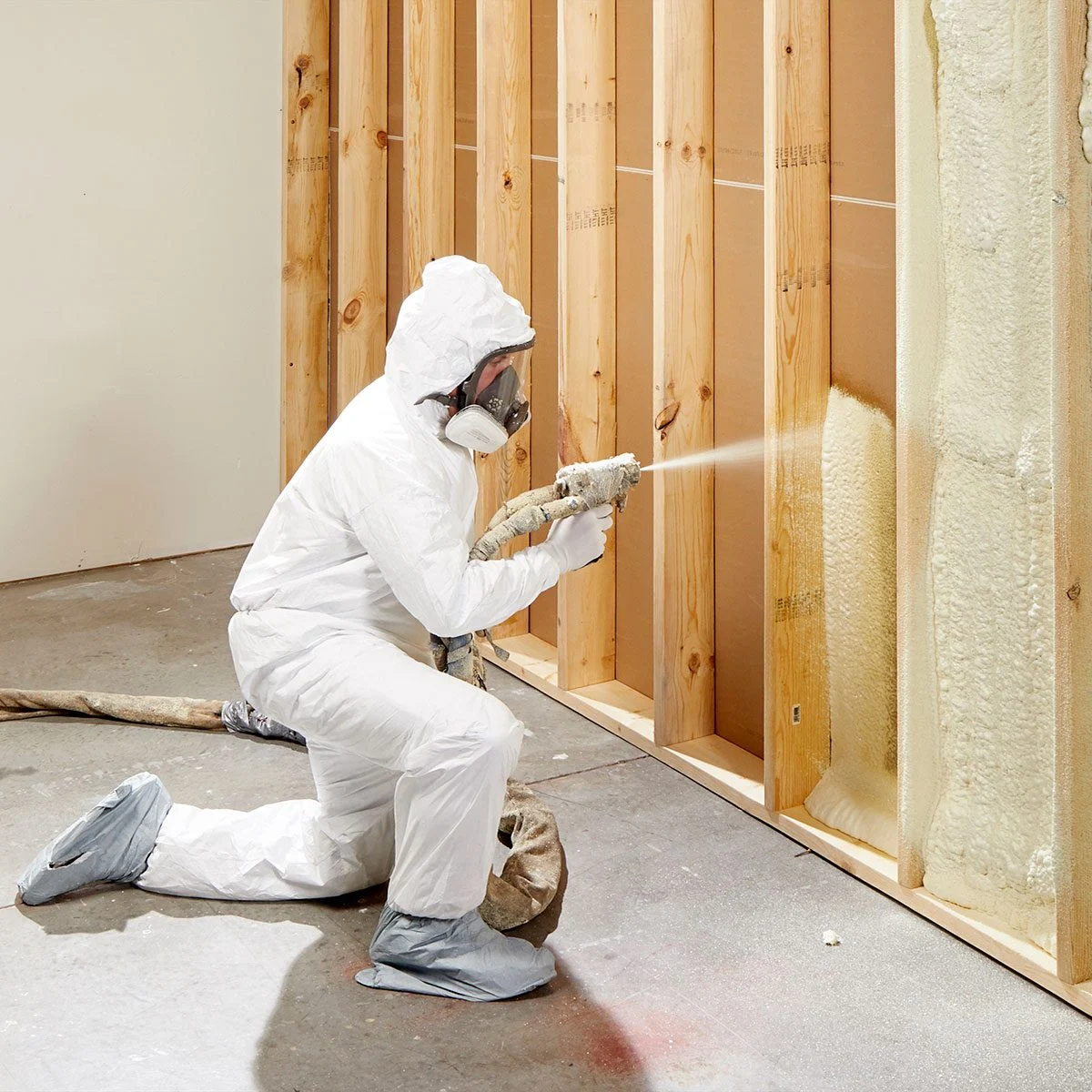How c Helps Commercial Properties Save on Energy
Spray foam insulation helps commercial buildings cut energy consumption by creating a continuous barrier that eliminates air leaks and resists heat flow. Its expansive nature fills gaps and irregular spaces, preventing conditioned air from escaping and stopping unfiltered outdoor air from entering. This leads to a more stable indoor environment, less reliance on heating and cooling systems, and significantly lower monthly energy bills.
The initial installation cost of spray foam is often recovered through reduced utility bills within just a few years. This article breaks down the specific ways spray foam insulation reduces energy waste, compares it to other insulation materials, explains the technical data, and offers insight on what to consider before making a decision.
Energy Benefits of Spray Foam for Commercial Buildings
Reduced Heating and Cooling Demand
Spray foam insulation buid monolithic insulation layer that eliminates common vulnerabilities like thermal bridging and loose-fill gaps found in older insulation types. As a result:
- Interior spaces maintain consistent temperatures year-round
- HVAC systems operate more efficiently and require fewer runtime hours
- Energy usage drops across all climate seasons
- Operational costs are lowered, improving overall facility efficiency
Sealing Air Leaks and Moisture Gaps
Leaks in ductwork, unsealed joints, and roof connections are responsible for 20–30% of total energy loss in commercial spaces. Spray foam insulation acts as an air and vapor barrier in one, reducing uncontrolled airflow and humidity.
Bonus Tip: Closed-cell spray foam strengthens structural integrity, making it ideal for aging buildings that need reinforcement.
Comparison Table of Insulation Types Used in Commercial Properties
| Insulation Type | R-Value per Inch | Air Seal Capabilities | Water Resistance | Typical Use Cases | Average Lifespan |
|---|---|---|---|---|---|
| Spray Foam (Closed) | 6.5 – 7.0 | Excellent | High | Roof decks, wall cavities | 50+ years |
| Spray Foam (Open) | 3.5 – 4.0 | Very Good | Moderate | Interior partitions, ceilings | 20–30 years |
| Fiberglass Batts | 2.9 – 3.8 | Poor | Low | Standard wall cavities | 15–25 years |
| Cellulose (Blown-In) | 3.2 – 3.8 | Moderate | Low | Retrofit attic spaces | 20–30 years |
| Rigid Foam Panels | 4.5 – 5.0 | Limited (needs sealing) | High | Exterior walls, foundations | 30–40 years |
Technical Specs and Energy Performance Data
| Metric | Closed-Cell Spray Foam | Open-Cell Spray Foam |
|---|---|---|
| R-Value per Inch | 6.5 – 7.0 | 3.5 – 4.0 |
| Perm Rating (moisture flow) | < 1.0 (Low) | > 10 (High) |
| Air Impermeability | 100% | 98–100% |
| Compressive Strength | 25–30 psi | 5–10 psi |
| Application Thickness | 1–3 inches (closed) | 3+ inches (open) |
| Flame Retardant Rating | Meets Class I/II codes | Meets Class I/II codes |
| Thermal Bridging Resistance | High | Moderate |
Bonus Tip: Buildings in areas with seasonal temperature swings benefit from closed-cell foam’s superior thermal resistance and moisture barrier qualities.
Market Data on Commercial Energy Use
According to the U.S. Department of Energy:
- Commercial buildings make up about 18% of the nation’s total energy use.
- HVAC systems are responsible for roughly 35% of that total.
- Facilities using advanced insulation solutions like spray foam report HVAC energy savings of 30–40%.
- Spray foam can reduce overall air leakage by more than 90% in buildings with pre-existing gaps.

Where Spray Foam Makes the Most Impact
Roofs and Ceilings
Uninsulated or under-insulated roofs are a primary source of energy loss. Applying spray foam along the roof deck limits radiant heat in summer and reduces heat escape in winter.
Exterior and Interior Walls
Exterior spray foam blocks conductive heat transfer across wall assemblies. It also reduces infiltration of outside air, dust, and allergens.
Mechanical Rooms, Ductwork, and Utility Shafts
Unsealed duct joints and utility chases allow conditioned air to escape into non-occupied spaces. Spray foam provides a tight seal that maximizes delivery efficiency and minimizes thermal loss.
Bonus Tip: Apply foam around pipe penetrations and electrical boxes to close often-overlooked energy escape points.
Things to Consider Before Making a Decision
- Building Age and Structure: Retrofitting older buildings may require additional preparation like removal of outdated insulation.
- Compliance with Building Codes: Ensure your project meets fire, ventilation, and vapor barrier regulations in your jurisdiction.
- Facility Use Case: Warehouses, cold storage, and office complexes all have different insulation priorities.
- Regional Climate Zone: Colder climates demand insulation with higher R-values and better moisture control.
- Cost vs Payback Period: While more expensive initially, spray foam usually pays for itself through energy savings within 3–5 years.
- Access and Installation Logistics: Spray foam requires clear access to framing and surfaces during application. This can affect project timelines.
Bonus Tip: Request a blower door test after installation to confirm air tightness improvements.
Common Questions About Spray Foam for Commercial Use
Can spray foam be used in retrofit projects?
Yes. It adapts well to both new construction and retrofit applications, often improving older buildings’ efficiency without major demolition.
Does spray foam require ventilation during application?
Yes. Installers must follow safety procedures, wear personal protective gear, and ventilate the area until the foam fully cures.
Is spray foam effective in metal buildings?
Yes. It adheres to metal surfaces and prevents condensation, which is common in steel-framed structures.
What is the typical lifespan of spray foam insulation?
Closed-cell spray foam often lasts more than 50 years. Open-cell typically lasts 20–30 years under normal conditions.
Does spray foam offer soundproofing benefits?
Yes. Open-cell spray foam helps dampen sound transmission in office partitions and shared walls.

How Spray Foam Insulation Helps Commercial Properties Save on Energy FAQ
What’s the main benefit of spray foam in commercial buildings? It seals air leaks and insulates better than traditional materials, reducing heating and cooling expenses.
How does spray foam compare with traditional insulation materials? It performs better in thermal resistance and air sealing, often eliminating the need for separate air barriers.
Is it safe for occupied spaces? Yes. Once cured, it is non-toxic and stable. Safety precautions are necessary only during application.
Can spray foam reduce HVAC equipment size? Yes. Better insulation can lead to downsizing HVAC systems, saving on both installation and energy costs.
Does spray foam increase property value? In many cases, yes. Energy-efficient upgrades appeal to potential tenants and buyers by lowering long-term costs.
Make the Right Decision
Spray foam insulation gives commercial property owners a measurable and lasting way to reduce energy waste. By sealing cracks, gaps, and open cavities in a single application, it delivers both insulation and air barrier benefits. While the upfront cost is higher than traditional insulation, the long-term savings, comfort, and building performance gains often justify the investment.
Evaluate your facility’s unique layout, climate, and usage patterns. Pair that with an energy assessment and local code review to decide if spray foam is the right fit for your commercial project.
Reviewer: Olivia Thompson has spent 10 years working in spray foam insulation, helping companies grow their visibility. She reviewed this article and provided valuable suggestions on how to better align the content with the needs and expectations of customers, ensuring it resonates with the target audience.













